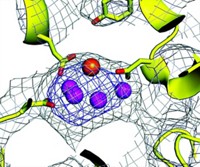Advertisement
Grab your lab coat. Let's get started
Welcome!
Welcome!
Create an account below to get 6 C&EN articles per month, receive newsletters and more - all free.
It seems this is your first time logging in online. Please enter the following information to continue.
As an ACS member you automatically get access to this site. All we need is few more details to create your reading experience.
Not you? Sign in with a different account.
Not you? Sign in with a different account.
ERROR 1
ERROR 1
ERROR 2
ERROR 2
ERROR 2
ERROR 2
ERROR 2
Password and Confirm password must match.
If you have an ACS member number, please enter it here so we can link this account to your membership. (optional)
ERROR 2
ACS values your privacy. By submitting your information, you are gaining access to C&EN and subscribing to our weekly newsletter. We use the information you provide to make your reading experience better, and we will never sell your data to third party members.
Analytical Chemistry
X-ray pulses yield charge density movies
Technique is complementary to methods that measure electron energies and spins, such as time-resolved electron and X-ray spectroscopies
by Jyllian Kemsley
October 3, 2016
| A version of this story appeared in
Volume 94, Issue 39
Taking advantage of molecules’ quantum mechanical ability to exist in two states at once, researchers at SLAC National Accelerator Laboratory have used X-ray pulses to create movies of charge density and nuclear motion in gas-phase iodine molecules with atomic spatial and femtosecond time resolution (




Join the conversation
Contact the reporter
Submit a Letter to the Editor for publication
Engage with us on Twitter